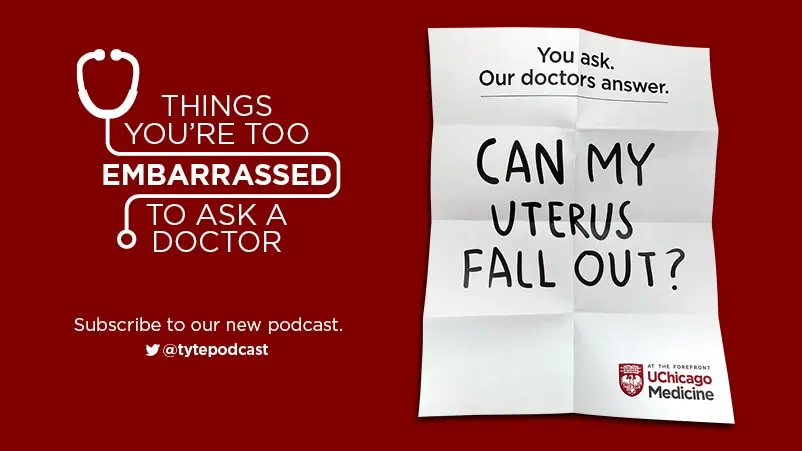What is loneliness?

Occasions like Valentine's Day have the potential to cause people to focus intensely on their relationships. While some embrace independence or feel embraced by loved ones, others can feel a sense of loneliness. But what exactly is loneliness, and what causes it? UChicago Medicine spoke with Dr. Stephanie Cacioppo, assistant professor of psychiatry and behavioral neuroscience, to find out.
What is loneliness?
Cacioppo: Loneliness is a state of mind characterized by a dissociation between what an individual wants or expects from a relationship and what that individual experiences in that relationship.
Because loneliness is a state of mind, being physically alone is not a necessary nor a sufficient condition to experience loneliness. One can experience a lonely state of mind while being with people at work, at home or even in a marriage. Income, education, gender and ethnicity don't necessarily protect you from loneliness, and it is contagious.
You’ve said loneliness is an epidemic. What are the health implications of loneliness and how bad is the problem?
One in three people in America is affected by loneliness, and one in 12 is affected severely. The effects of loneliness can't really be tied to physical characteristics of lonely people. Rather, they are due to the effects of loneliness on everyday people.
Loneliness is a universal condition that makes a person irritable, self-centered, depressed and is associated with a 26 percent increase in the odds of premature mortality. According to the Cacioppo evolutionary model of loneliness, loneliness causes more than just mental health and behavioral dysfunction. For instance, studies have also reported a significant association between loneliness and various health issues such as cardiovascular disease, diminished sleep salubrity (quality), increased inflammation, and decreased viral immunity, even after controlling for various other factors.
Loneliness can feel more acute around Valentine’s Day when we’re bombarded with messages about love and coupledom. What are the best coping mechanisms to help lonely hearts?
Loneliness is typically reversible, but commonsense solutions are not helpful. First, one must understand the definition of loneliness. Being alone for dinner on Valentine’s Day is not the same as being lonely; one can be physically alone and mentally with someone by thinking of their beloved, keeping their beloved in photographs or having dinner with their beloved via video chat.
In turn, one may feel extremely lonely while having dinner with an estranged partner on Valentine’s Day. Finally, one may seek solitude on Valentine’s Day and be extremely happy alone (both mentally and physically). Solitude is different from loneliness.
What’s your best advice for someone who’s feeling isolated and lonely?
Introspection, connection and interaction. First, stay connected and make a daily effort to express gratitude. Next, do something helpful or nice for others (without expecting anything in return). Collaborate with others and work together in harmony. Volunteer to help people in need. Choose to engage with people (including strangers) on different levels and on a broad range of topics, and listen to them. Finally, share positive news (rather than negative information) and expect the best from people.
What are you doing on the research front to treat loneliness? How could it ultimately help people?
My main research question is how the human brain forms, maintains and restores lasting meaningful relationships: how humans go from “me” to “we” and back. To address this question, I study the presence and absence of relationships. The better our understanding of successful social relationships, the better our respect for the significance and potency of their role on physical and mental health.
As more is learned about the specific mechanisms through which loneliness is linked to negative health outcomes, new behavioral and pharmacological interventions may be identified to break the chain of events and block the adverse outcomes within one or more pathways (Cacioppo & Cacioppo, 2018; Cacioppo & Cacioppo, 2015). For instance, the association between loneliness and HPA activation, and possibly other pathways, may be modifiable through self-protective appraisal processes that mitigate the implicit hyper-vigilance for social threats (Rueggeberg et al., 2012). Our recent review of the literature and recent animal research suggest a more specific adjunctive pharmacological treatment for loneliness. Perceived social isolation (loneliness) in mice and humans increases hypothalamic-pituitary-adrenal axis (HPA) activity, reduces the biosynthesis of allopregnanolone, decreases brain-derived neurotrophic factor (BDNF) expression, and increases depressive behavior (see review by Cacioppo, Capitanio, & Cacioppo, 2014; Cacioppo & Cacioppo, 2017). Our clinical trial aims to normalize deficient levels of allopregnanolone in lonely individuals.
Allopregnanolone (ALLO) is an endogenous neurosteroid in the brain, and the exogenous administration of ALLO (or ALLO precursors, such as pregnenolone (PREG)) reduces the effects of loneliness on HPA activity, BDNF expression and depressive behavior (Agis-Balboa et al., 2007; Cacioppo & Cacioppo, 2015; Cacioppo, Capitanio et al., 2014; Nelson & Pinna, 2011; Nin, Martinez, Pibiri, Nelson & Pinna, 2011). The evidence-based rational for targeting ALLO levels with PREG (pregnenolone) rather than SSRIs is the following: animal research suggests that social isolation is associated with a decrease in ALLO levels by a mechanism independent from 5-HT reuptake inhibition. Because a growing body of evidence from animal research shows that various antidepressant agents (including fluoxetine (FLX)) also elevate brain ALLO levels – leading to the suggestion that ALLO induction might be an important mechanism for the antidepressant effects of selective serotonin reuptake inhibitor (SSRIs) – an SSRI (e.g., with FLX) approach could have been considered. However, FLX has a low response rate, which varies from 30-50 percent, and a constellation of undesirable side effects. Thus, pre-clinical work signifying pregnenolone – which is generally well tolerated – selectively up-regulates ALLO suggests it is a viable approach to engage ALLO in humans.
Sign Up for Our Health & Wellness Newsletter
Our health and science e-newsletter features articles on trending health topics and insight from UChicago Medicine experts.
Subscribe Now
